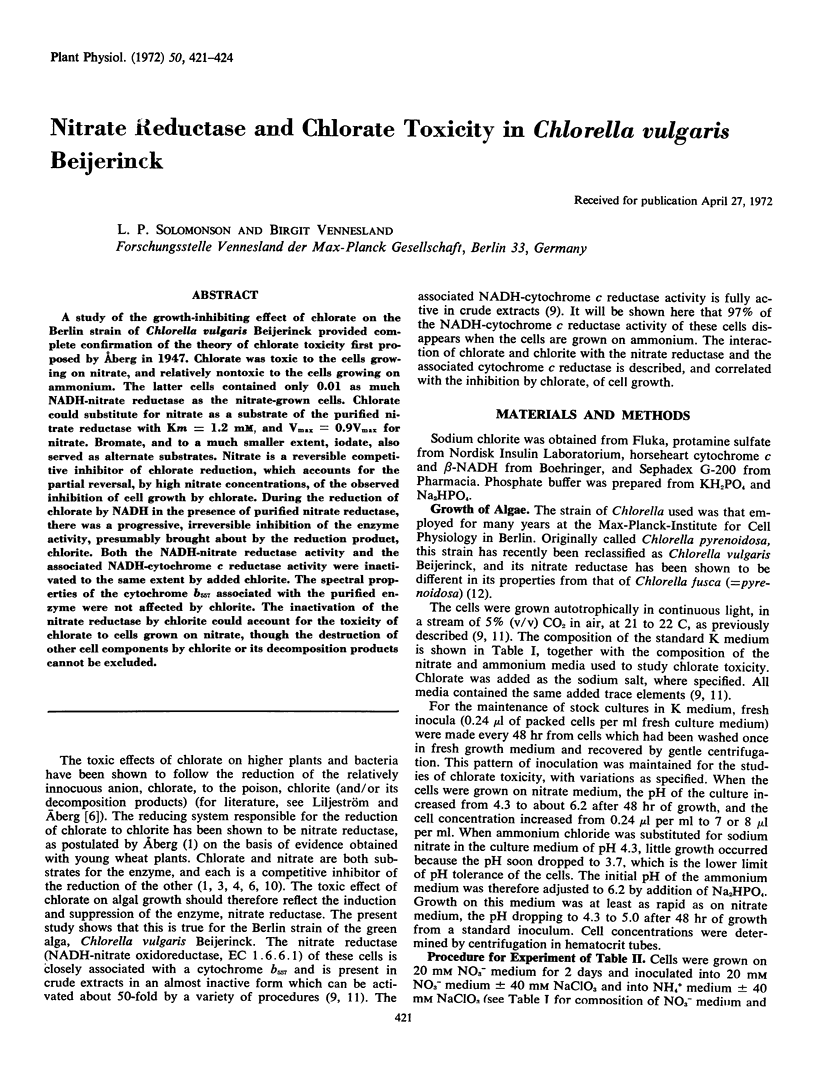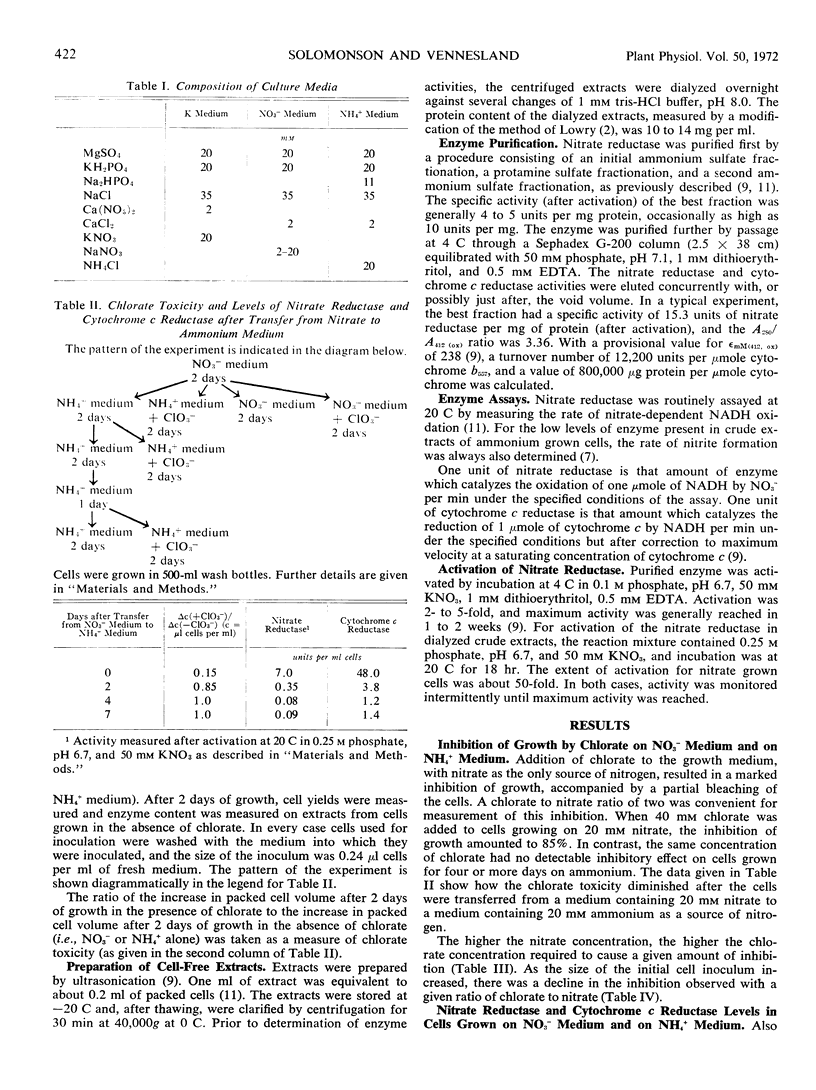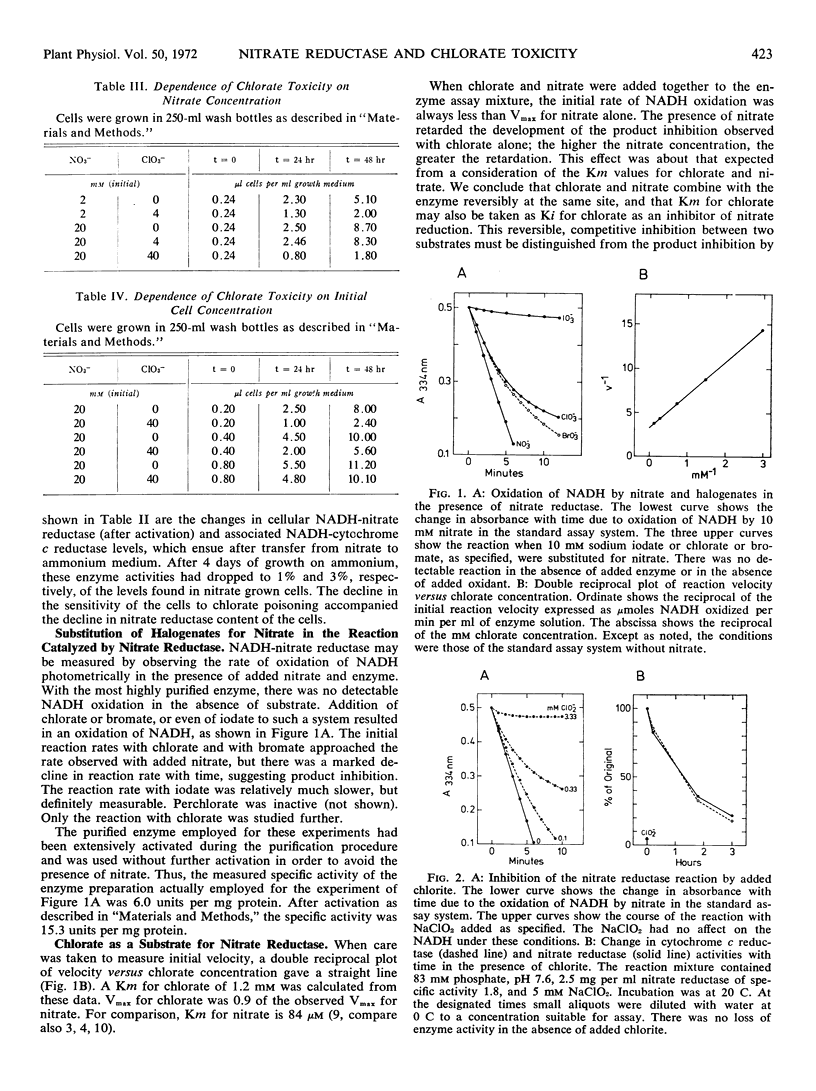Abstract
A study of the growth-inhibiting effect of chlorate on the Berlin strain of Chlorella vulgaris Beijerinck provided complete confirmation of the theory of chlorate toxicity first proposed by Åberg in 1947. Chlorate was toxic to the cells growing on nitrate, and relatively nontoxic to the cells growing on ammonium. The latter cells contained only 0.01 as much NADH-nitrate reductase as the nitrate-grown cells. Chlorate could substitute for nitrate as a substrate of the purified nitrate reductase with Km = 1.2 mm, and Vmax = 0.9Vmax for nitrate. Bromate, and to a much smaller extent, iodate, also served as alternate substrates. Nitrate is a reversible competitive inhibitor of chlorate reduction, which accounts for the partial reversal, by high nitrate concentrations, of the observed inhibition of cell growth by chlorate. During the reduction of chlorate by NADH in the presence of purified nitrate reductase, there was a progressive, irreversible inhibition of the enzyme activity, presumably brought about by the reduction product, chlorite. Both the NADH-nitrate reductase activity and the associated NADH-cytochrome c reductase activity were inactivated to the same extent by added chlorite. The spectral properties of the cytochrome b557 associated with the purified enzyme were not affected by chlorite. The inactivation of the nitrate reductase by chlorite could account for the toxicity of chlorate to cells grown on nitrate, though the destruction of other cell components by chlorite or its decomposition products cannot be excluded.
Full text
PDF



Selected References
These references are in PubMed. This may not be the complete list of references from this article.
- Hackenthal E., Hackenthal R. Die Nitratreduktion durch zellfreie Extrakte aud Bacillus cereus. Biochim Biophys Acta. 1965 Sep 13;107(2):189–202. [PubMed] [Google Scholar]
- LEES H., SIMPSON J. R. The biochemistry of the nitrifying organisms. V. Nitrite oxidation by Nitrobacter. Biochem J. 1957 Feb;65(2):297–305. doi: 10.1042/bj0650297. [DOI] [PMC free article] [PubMed] [Google Scholar]
- Pichinoty F., Piéchaud M. Recherche des nitrate-réductases bactériennes A et B: méthodes. Ann Inst Pasteur (Paris) 1968 Jan;114(1):77–98. [PubMed] [Google Scholar]
- STRAAT P. A., NASON A. CHARACTERIZATION OF A NITRATE REDUCTASE FROM THE CHEMOAUTOTROPH NITROBACTER AGILIS. J Biol Chem. 1965 Mar;240:1412–1426. [PubMed] [Google Scholar]
- Vennesland B., Jetschmann C. The nitrate reductase of Chlorella pyrenoidosa. Biochim Biophys Acta. 1971 Mar 10;227(3):554–564. doi: 10.1016/0005-2744(71)90006-4. [DOI] [PubMed] [Google Scholar]
- Vennesland B., Solomonson L. P. The nitrate reductase of chlorella: species or strain differences. Plant Physiol. 1972 Jun;49(6):1029–1031. doi: 10.1104/pp.49.6.1029. [DOI] [PMC free article] [PubMed] [Google Scholar]


